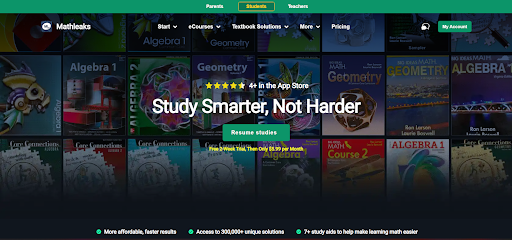A complete step-by-step guide on creating a math study guide, to help your kids thrive in their math classes.
In this article, we will talk about:
- Why is it important that your child learns math?
- How will your child learn math?
- How to Create a Math Study Guide
Keep reading!
Why is it important that my child learns math?
To begin with, you may sometimes wonder why your kid should study math, especially if they don’t have the best relationship with the subject. Some people say that everything is for everyone, and it’s normal to think that math as well falls into this category.
We know that mathematics may not be everyone’s favorite, and not everyone has to master math. Nevertheless, there are many reasons why everyone should have at least a few basic math skills and be able to utilize math at a certain level.
Math teaches logic and order. Children can apply the mental discipline they acquire in math education to their daily lives. Businesses are aware of this because some will recruit math majors under the assumption that people who excel in math have developed their ability to reason.
Math may also serve as a platform for practicing and honing critical-thinking abilities. When students are asked to explain how they came up with a solution to a challenging issue or to explain the principles underlying formula or technique, this is an illustration of mathematical and critical thinking.
Without basic math skills, independent living is virtually impossible. Early elementary school years are when children first learn about money, and later grades are when they can compute percentages and fractions.
It’s critical to have faith in your child’s capacity for mathematical growth. Supporting children to become mathematicians requires a growth mindset or the conviction that we can continue to learn and improve in math.
Children are influenced by their parents’ attitudes. They can pick up on adults’ anxiety when it comes to mathematics or when they make comments like “some individuals are just not good at math.” Particularly, girls take up on older women’s views. To foster a positive attitude, try stating, “Let me try to figure it out,” rather than, “I’m not good at math.” Be problem-solving-oriented.
How will my child learn math?
Children learn math best through activities that enable them to explore, think, solve problems and explain the solutions.
When children can relate mathematical methods and concepts to their personal experiences, they learn more quickly. They can “see” the concepts being taught by utilizing ordinary things (like measuring the surface of a desk) and engaging in routine activities (like reporting weather trends over the past month).
Learning how to solve problems is a crucial component of math education. Trial and error are promoted as a way for kids to learn how to solve problems and build their study skills. Ultimately, however, most math skills kids learn are taught in school. In this context, it’s often helpful to have a handy study guide that they build and maintain all throughout the school year.







